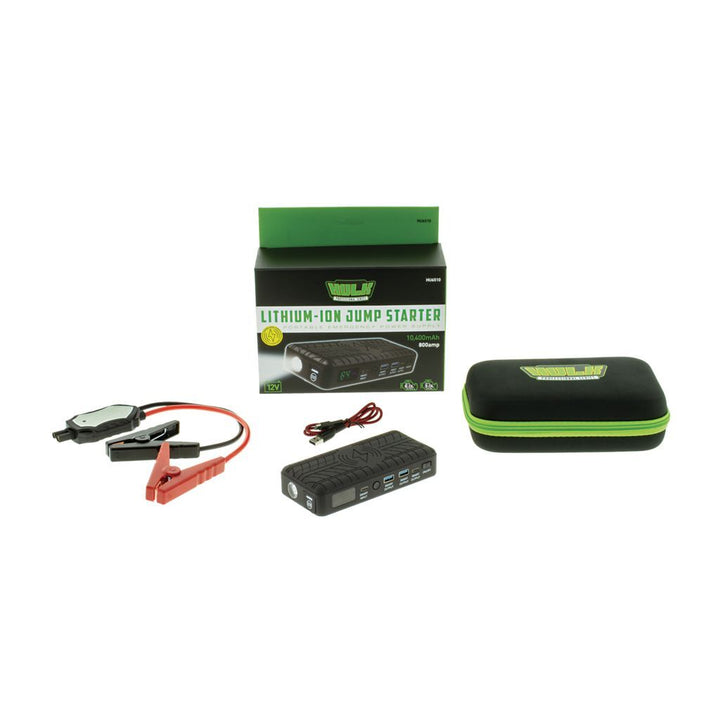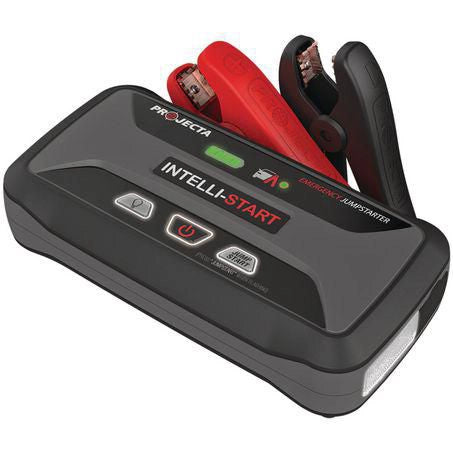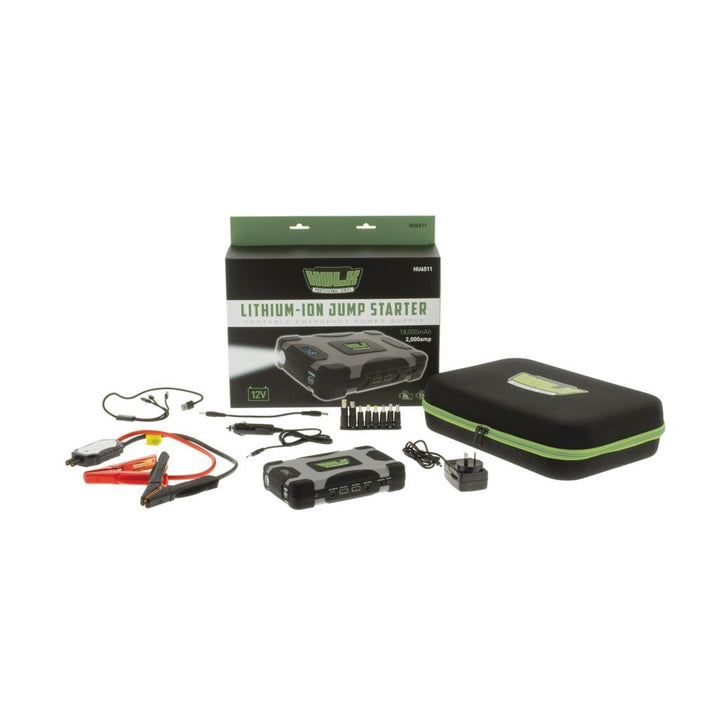A flat battery is the classic trip-stopper. It turns up at the servo, the school pick-up, the boat ramp, or a roadhouse a thousand kilometres from home.
The fix, fortunately, is straightforward once you understand how to jump start a car safely.
This guide explains the right way to use a jump start battery pack (the easiest option) or traditional jumper leads, how to choose between battery jump starters for different vehicles, and the habits that protect modern electronics. It’s written for Australian conditions and for a mix of vehicles - small cars, big petrols, turbo-diesel 4WDs, boats, bikes and light trucks.
First checks: is it really the battery?
Symptoms matter. A dead battery usually shows up as a lazy crank, a clicking starter, dim headlights, or the dash resetting when you turn the key. If yesterday’s drive was normal and today it won’t start your car, begin with the car battery.
If a charging light appeared while driving, if interior electrics went odd, or if the engine dies the moment a pack is removed, the vehicle’s battery or electrical system may have a deeper fault - alternator, belt, main fuse, or a loose earth.
You can still jump start to get moving, but plan a test.
Two proven ways to start a car
A) Use a portable jump starter (clean and simple)
A modern portable jump starter - also called a car jump starter - is compact, spark-safe and designed for everyday owners. Most units are a lithium jump starter built around a lightweight lithium battery; better packs add clear safety features such as reverse-polarity, short-circuit, over-temperature and timeout protection.
Steps (learn once; it becomes muscle memory):
- Park safe: auto in Park, manual in neutral, handbrake on, accessories off.
- Open the bonnet and locate the battery posts or factory jump studs.
- Clamp red to the positive (+) post.
- Clamp black to an engine or chassis earth on the flat vehicle - not the battery’s negative terminal.
- Power the pack (some auto-arm; others need a button).
- Crank for up to five seconds to start a car; if it doesn’t fire, wait 30–60 seconds and try again.
- Once the engine runs, remove clamps in reverse order (black off first, then red) and let it idle for a few minutes before you drive.
A jump start battery pack is ideal when you’re solo on a beach track, after hours at a marina car park, or parked nose-in where strangers can’t line up their bonnet with yours; it doesn’t rely on a helper appearing with cables.
B) Use jumper leads and a donor vehicle (the classic method)
Good jumper cables still earn their keep. Choose heavy-gauge leads with strong, clean clamps; thin cable drops voltage and wastes time.
Steps:
- Park the donor close but not touching. Both ignitions off.
- Connect red to the flat battery’s +, then red to the donor’s +.
- Connect black to the donor’s –, then black to a clean engine or chassis earth on the flat vehicle (again, avoid the negative terminal).
- Start the donor and hold a gentle fast idle (1,500-2,000 rpm) for two to three minutes to pre-charge.
- Crank the flat vehicle; rest the starter between attempts.
- Remove the leads in reverse order and keep the revived engine running.
Tip: many late-model cars hide the battery; use the labelled jump posts in the engine bay to avoid wrestling with trim and to get a better earth.
Choosing the right jump starter for your vehicle
Match the tool to the job; not all battery jump starters are equal.
Small engines (motorbikes, mowers, jet skis):
Choose a compact portable battery unit rated for 12-volt motorcycles and small petrols. It lives in the glovebox and pays for itself the first time you misjudge a switch or leave a light on at camp.
Daily drivers (small–mid petrols and many four-cylinder diesels):
Select a 12 V lithium jump starter with honest start-current specs, spark-proof clamps and reverse-polarity protection. USB-C charging makes top-ups painless on trips.
Large petrols and diesel 4WDs:
Step up to a heavy duty jump starter with higher sustained cranking current, thicker cables and robust clamps. Diesels draw a bigger inrush; the first second counts.
Light trucks and plant (24 V):
Use a 24 V unit. If a starter is dual-voltage (12/24 V), confirm the selector before you connect; mixing voltages risks serious damage.
Decoding the numbers:
- Peak amps are the split-second burst; useful but not decisive.
- Start/cranking current is the sustained output over a few seconds - the more realistic guide.
- Capacity (Wh or mAh) dictates how many attempts you get before recharge.
- Ingress rating (IP65/IP67) and operating temperature matter for rain, dust and Australian heat; LiFePO₄ variants tolerate heat better.
Safety features worth paying attention to
- Reverse polarity protection prevents energising if clamps are swapped - a genuine lifesaver when stress is high.
- Short-circuit and spark-safe clamps reduce risk around fuel vapours or a battery venting gas.
- Over-temperature and timeout logic protects both pack and vehicle.
- Boost/override modes help with severely depleted batteries; use exactly as directed.
Even with smart electronics, remove rings and metal watches, keep your face clear of the vents, and keep flames or cigarettes well away.
After the jump: getting back to normal
Let the engine idle for 10-20 minutes, then take a half-hour drive if you can. Watch for a battery/charge light; if it stays on, the alternator or belt needs attention. In Australian heat, many batteries live three to four years; if yours is older, plan a replacement. Most modern cars cope with a flat event without drama, but if you run complex accessories a workshop can preserve settings during a swap.
Special notes for 4WDs, boats and trucks
4WDs: winches, fridges and short trip cycles are hard on batteries. Carrying a larger car jump starter, adding a reliable earth stud in the engine bay, and checking clamps for dust-grit all help.
Boats: salt and spray demand IP-rated clamps and dry storage. For outboards, a mid-size portable jump starter is ideal; bigger inboards may need more current. Remember: UHF for local chatter, VHF for distress - separate systems with different rules.
24-volt trucks and coaches: never attempt to revive a 24 V system with a 12 V pack, or vice versa. Use the correct tool and follow the manual line-by-line.
Common mistakes (and the quick fix)
- Clamping to paint or corrosion: scrape a clean spot or use the dedicated stud; poor contact wastes every amp.
- Tiny jumper leads: thin cable drops voltage and cooks patience; buy heavy-gauge jumper leads once.
- Cranking endlessly: five seconds on, thirty seconds off; starters hate heat.
- Wrong voltage: confirm 12 V vs 24 V before anything else.
- Neglected packs: heat kills cells; don’t store a pack on a dash in summer. Treat it like any lithium battery—cool, dry, topped up.
Care and storage for peace of mind
Recharge after use and every eight to twelve weeks; set a reminder. Keep the pack reachable - glovebox, door pocket or under-seat bin - not buried under recovery boards. Inspect clamps and cables for nicks or green corrosion, and replace damaged parts. Do one practice run in the driveway; when the real moment arrives, you’ll act instead of guess. That small habit delivers genuine peace of mind.
Quick reference: jump starting your vehicle
- Park safe; ignition and accessories off.
- Red clamp to positive, black clamp to engine/chassis earth on the flat vehicle (avoid the negative terminal).
- Jump starting your vehicle: try, wait 30–60 seconds if no joy, then try again.
- Remove clamps in reverse order.
- Drive and test the system soon.
Bottom line:
Knowing how to jump start a car is part toolkit, part mindset.
Carry a suitable portable jump starter or a set of heavy jumper cables, use the right connection points, follow the sequence, and give the battery a moment to recover before you crank again. Do that and most "won't start" moments become quick, predictable fixes - confidence on every beach run, bush track and big lap.









